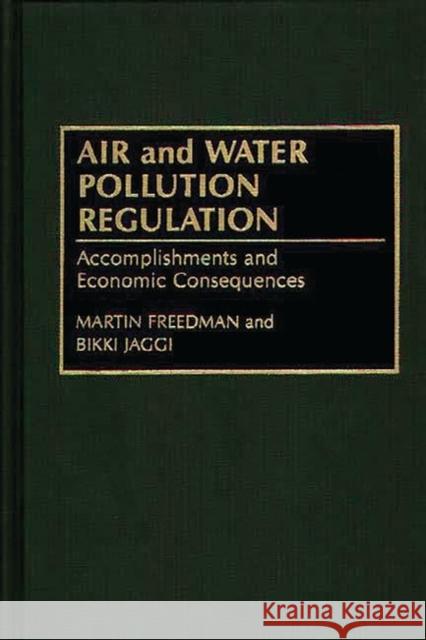Air and Water Pollution Regulation: Accomplishments and Economic Consequences » książka
Air and Water Pollution Regulation: Accomplishments and Economic Consequences
ISBN-13: 9780899307213 / Angielski / Twarda / 1993 / 288 str.
This book tells the story of the polution-related activities of companies from the pulp and paper and electric utility industries. The authors trace the development of air and water pollution regulations, analyze pollution data obtained from the EPA offices filed by the companies, and examine the impact of companies' pollution performance on their economic performance. Specifically, the book conducts a comparative analysis of pollution performance of the companies over an eight-year period to evaluate whether the companies have been successful in reducing pollution emissions over this period and how far the pollution emission requirements of the environmental laws are being met, and whether the industries' fear that pollution abatement expenditures would negatively impact their economic performance has any validity.
After discussing the provisions and accomplishments of U.S. federal air and water pollution laws, the authors present a plant by plant analysis of air pollution performance for 1979 and 1987 for 109 plants from fifteen electric utility companies, and plant by plant water pollution analysis of fifteen pulp and paper companies. In addition, comparative analyses are presented for the electric utility companies by each air pollutant and by the total air pollution, and for pulp and paper companies for each water pollutant and for the total water pollution. On the basis of an overall pollution index, the authors rank the electric utilities and pulp and paper companies for air and water pollution respectively. The comparative analyses of different time periods demonstrate which companies improved their pollution-abatement performance. The impact of pollution performance on economic performance is addressed by the authors over the short as well as long term. On the basis of earlier research findings and economic theory, the authors hypothesize that there would be a negative economic impact in the short run, but in the long run, this negative impact would disappear. The real life data from companies support this general hypothesis. Finally, the authors relate their research findings to public policy issues and make recommendations for public policy on environmental pollution.











